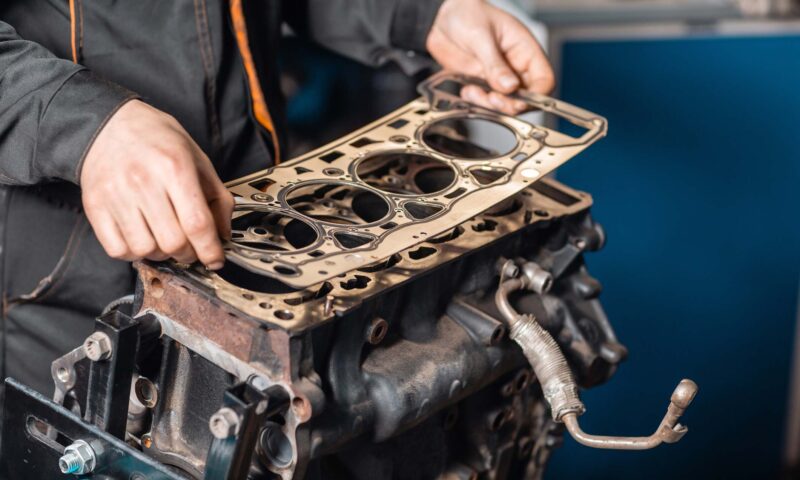A car engine is a complex machine with many parts working together to keep your vehicle running smoothly. One of the crucial components in this intricate system is the head gasket. Despite its importance, many drivers are unaware of what a head gasket does and why it’s so essential. Let’s explore how they work, and why they matter.
Everything you need to know about it
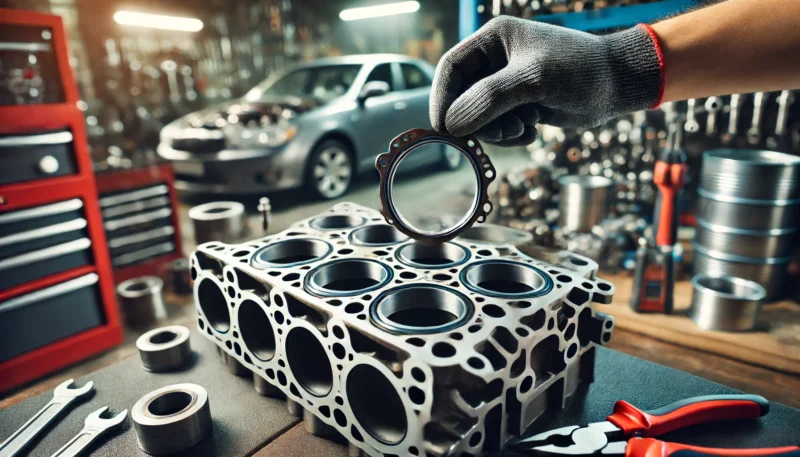
The head gasket is a crucial seal in your car’s engine. It sits between the engine block and the cylinder head. Its primary job is to maintain the seal between these two components, ensuring that the engine’s internal pressure and fluids remain where they belong.
The anatomy of a head gasket
A head gasket is typically made from layers of steel or composite materials. These layers are designed to withstand high temperatures and pressures, which is essential given the extreme conditions inside an engine.
The gasket’s design includes various holes and openings to allow for the passage of oil, coolant, and combustion gases.
Types
There are several types of head gaskets, each suited to different engine designs and performance requirements:
- Multi-Layer Steel (MLS): Made from multiple layers of steel, these gaskets are known for their durability and are commonly used in modern engines.
- Composite: These gaskets are made from materials like asbestos or graphite and are often found in older vehicles.
- Copper: Known for their excellent sealing capabilities, copper gaskets are used in high-performance and racing engines.
- Elastomeric: These gaskets have a rubber coating to enhance sealing and are used in specific applications where flexibility is needed.
How does a head gasket work?
The head gasket’s primary role is to seal the combustion chambers in the engine. This seal is vital for maintaining the pressure necessary for the engine to run efficiently. Additionally, the head gasket prevents oil and coolant from mixing, which could lead to engine failure.
Check out also our article on the difference between regular spark plugs and platinum ones.
Sealing the combustion chamber
The combustion chamber is where the magic happens. Fuel and air mix and ignite, producing the power that drives the engine. For this process to be efficient, the chamber must be sealed tightly to maintain the pressure created by the combustion. The head gasket ensures this seal, allowing the engine to produce maximum power.
Preventing fluid leakage
Engines use various fluids, including oil and coolant, to function correctly. Oil lubricates the engine’s moving parts, while coolant helps manage the engine’s temperature. If these fluids were to mix, it could cause severe damage to the engine.
The head gasket prevents this by providing a barrier between the oil passages, coolant passages, and the combustion chambers.
Handling thermal expansion
Engines operate at high temperatures, causing metal components to expand. The head gasket must be flexible enough to accommodate this expansion while maintaining its seal. This is why materials like multi-layer steel are commonly used, as they can handle thermal stress without failing.
Signs of a failing head gasket
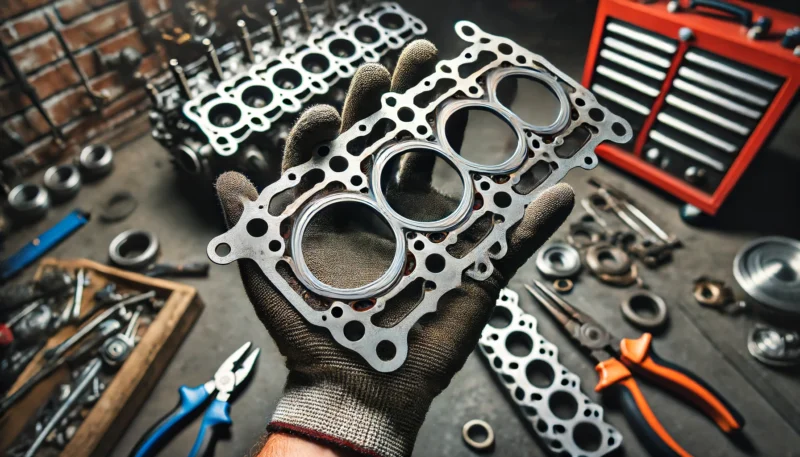
A head gasket is designed to last the lifetime of the engine, but it can fail due to various reasons, such as overheating, poor maintenance, or manufacturing defects. Knowing the signs of a failing head gasket can help you prevent serious engine damage.
1. Overheating
One of the most common signs of a failing head gasket is engine overheating. When the gasket fails, coolant can leak into the combustion chamber or oil passages, reducing its effectiveness and causing the engine to overheat.
2. White smoke from the exhaust
If you notice white smoke coming from your car’s exhaust, it could indicate that coolant is leaking into the combustion chamber due to a blown head gasket. The coolant burns along with the fuel, producing white smoke.
3. Milky oil
Check your engine oil regularly. If it appears milky or frothy, it could be a sign that coolant is mixing with the oil, which is a clear indication of a head gasket problem.
4. Loss of power
A failing head gasket can cause a loss of compression in the engine, leading to reduced power and performance. You might notice that your car struggles to accelerate or maintain speed.
4. Bubbles in the radiator
When the head gasket fails, combustion gases can enter the cooling system. This can cause bubbles to appear in the radiator or coolant reservoir.
How to diagnose a problem?
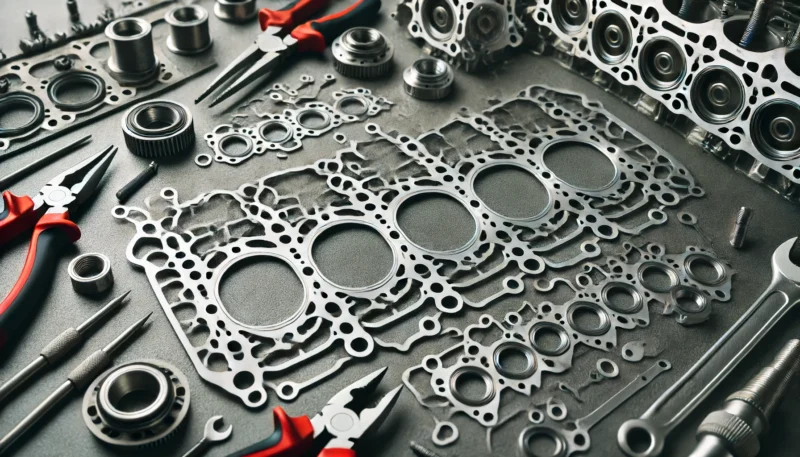
If you suspect a head gasket problem, it’s crucial to get a professional diagnosis. Mechanics have various tools and methods to confirm if a head gasket has failed.
Compression test
A compression test measures the pressure in each of the engine’s cylinders. Low pressure in one or more cylinders can indicate a head gasket issue.
Chemical test
Mechanics can use a chemical test to detect the presence of combustion gases in the coolant. If the test fluid changes color, it’s a sign that the head gasket is leaking.
Leak-down test
A leak-down test involves pressurizing the cylinders and measuring how many air escapes. Significant air leakage can indicate a head gasket issue.
The repair process
Repairing a head gasket should only be performed by experienced mechanics due to the precision required.
- Disassembly: The mechanic will remove the engine components to access the cylinder head.
- Inspection: The cylinder head and engine block are inspected for damage or warping.
- Replacement: The old gasket is removed, and a new gasket is installed.
- Reassembly: The engine components are carefully reassembled, and all connections are checked for proper sealing.
- Testing: The engine is tested to ensure the repair was successful and that there are no leaks.
Cost of repair
The cost of repairing a head gasket can vary widely depending on the make and model of the vehicle, the extent of the damage, and labor rates. On average, you can expect to pay between $1,000 and $2,000 for a head gasket replacement.
How to prevent failure?
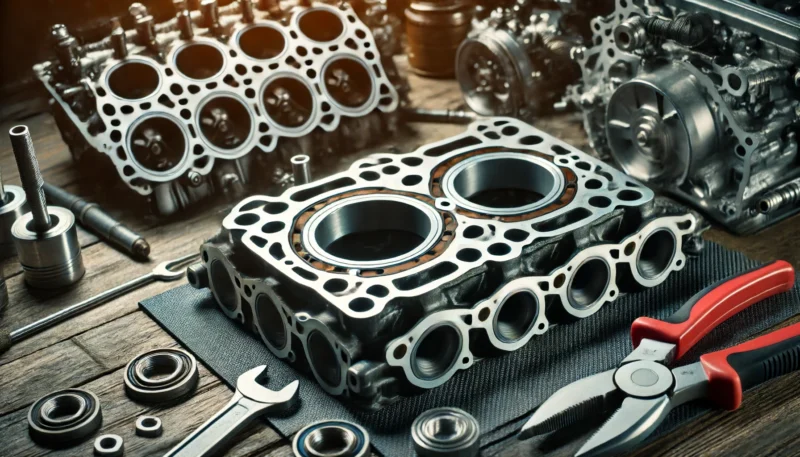
Regular maintenance
Follow your vehicle’s maintenance schedule, including regular oil changes and coolant flushes. Keeping the engine in good condition can help prevent head gasket issues.
Monitor engine temperature
Keep an eye on your engine’s temperature gauge. If you notice the engine running hotter than usual, address the issue promptly to avoid overheating.
Use quality fluids
Use high-quality engine oil and coolant that meet your vehicle’s specifications. These fluids play a crucial role in maintaining the head gasket’s integrity.
Avoid overheating
Overheating is a common cause of head gasket failure. If your engine starts to overheat, stop driving and address the issue immediately. Continuing to drive with an overheating engine can cause severe damage.
In summary
The head gasket might not be the flashiest part of your car’s engine, but it’s crucial for keeping things running smoothly. It seals the combustion chambers and prevents fluid leaks, making sure your engine performs efficiently and reliably. Knowing how it works and spotting signs of failure can save you from expensive repairs.

